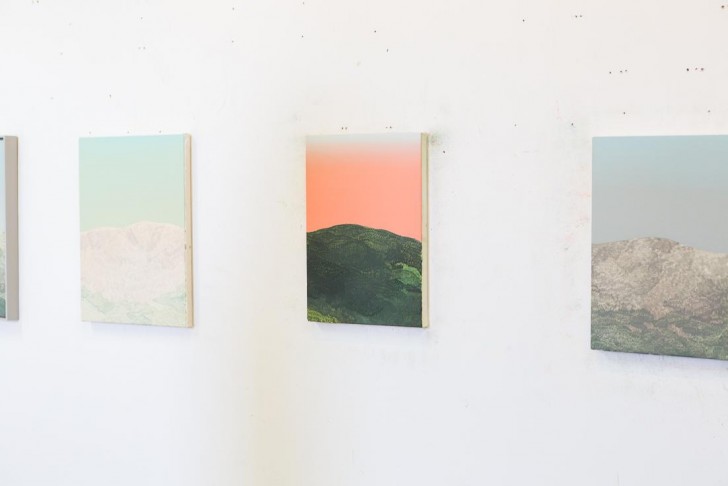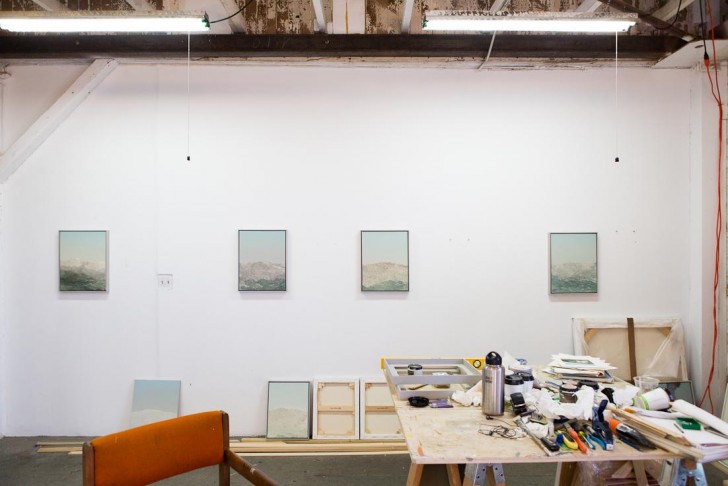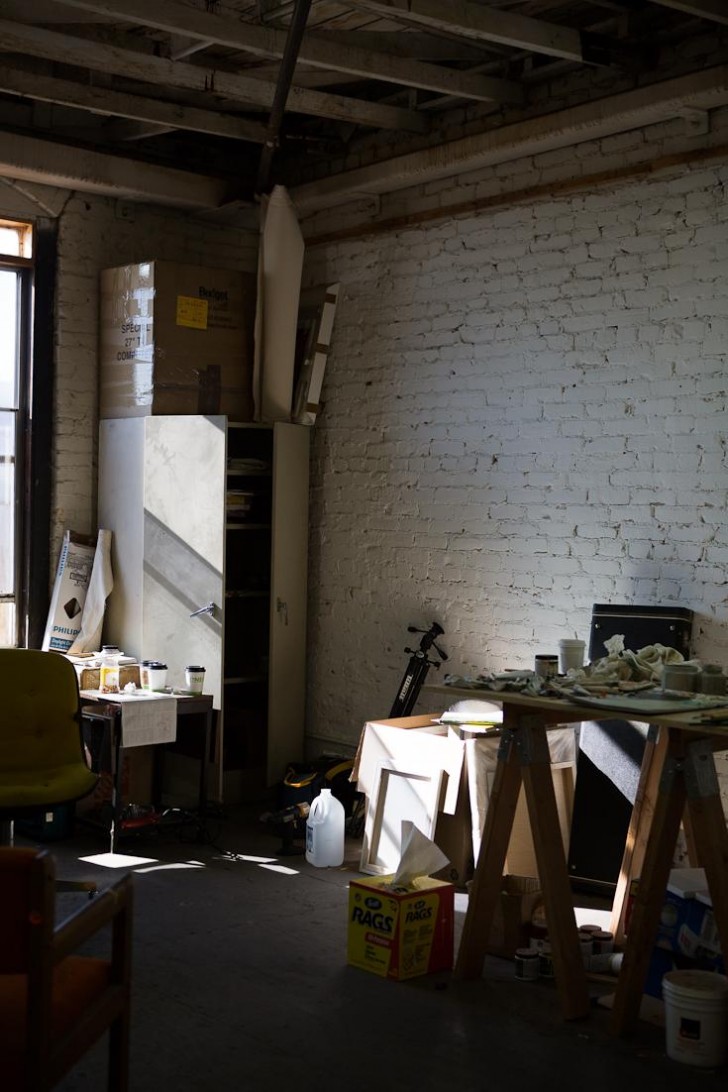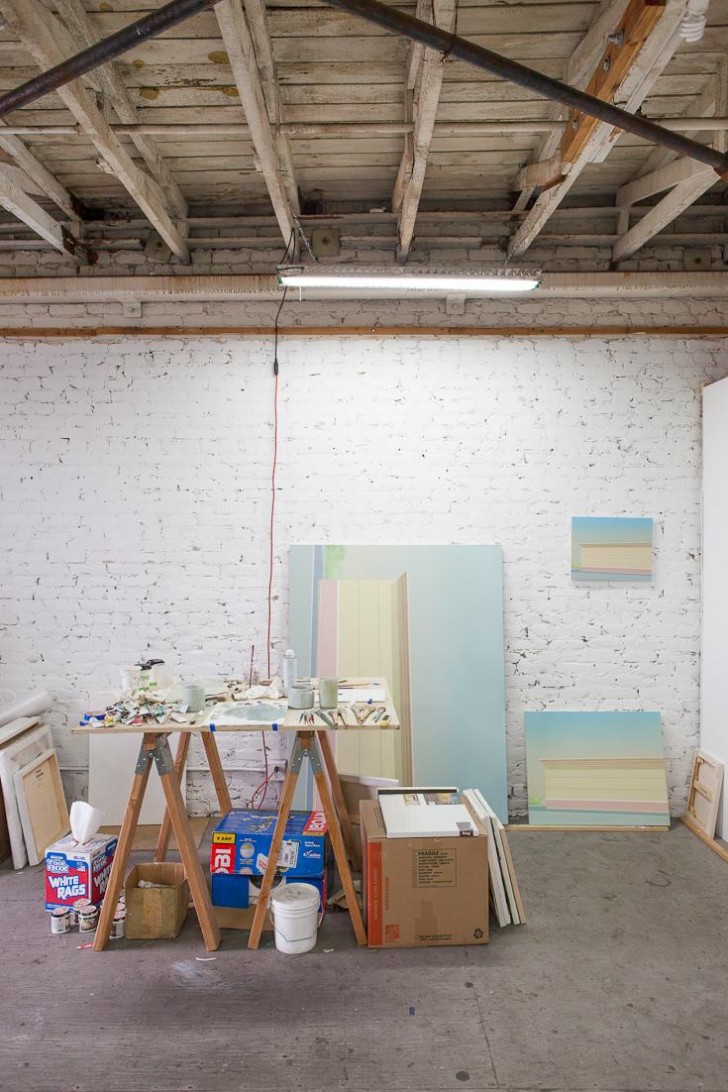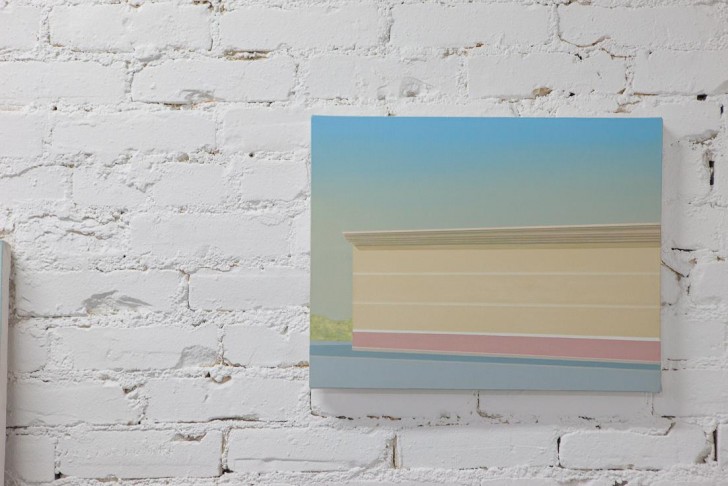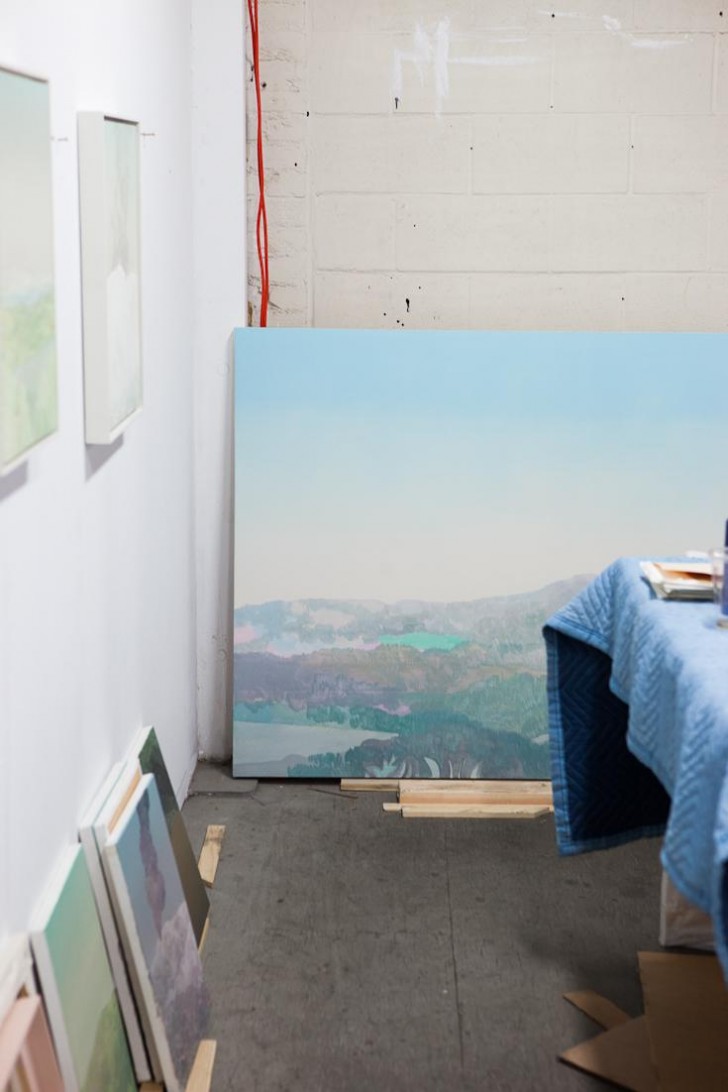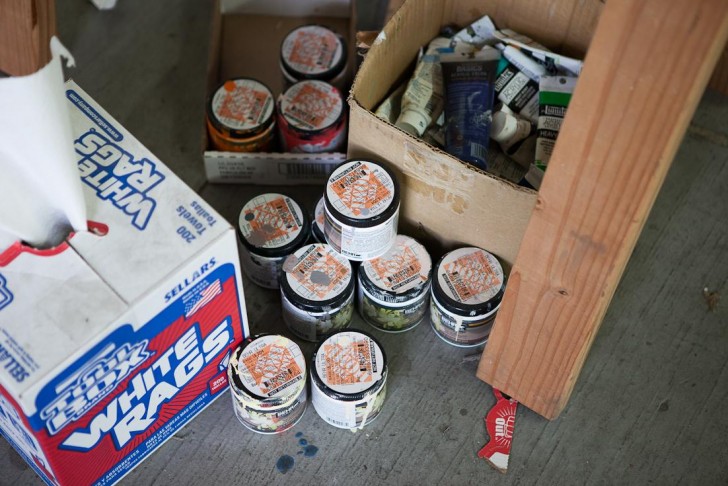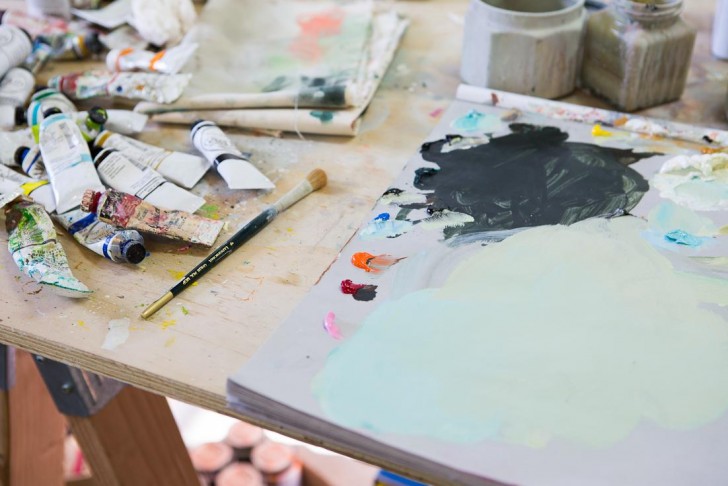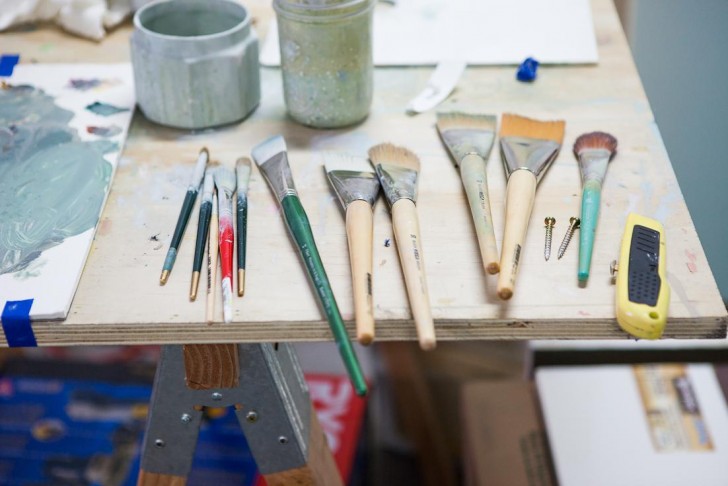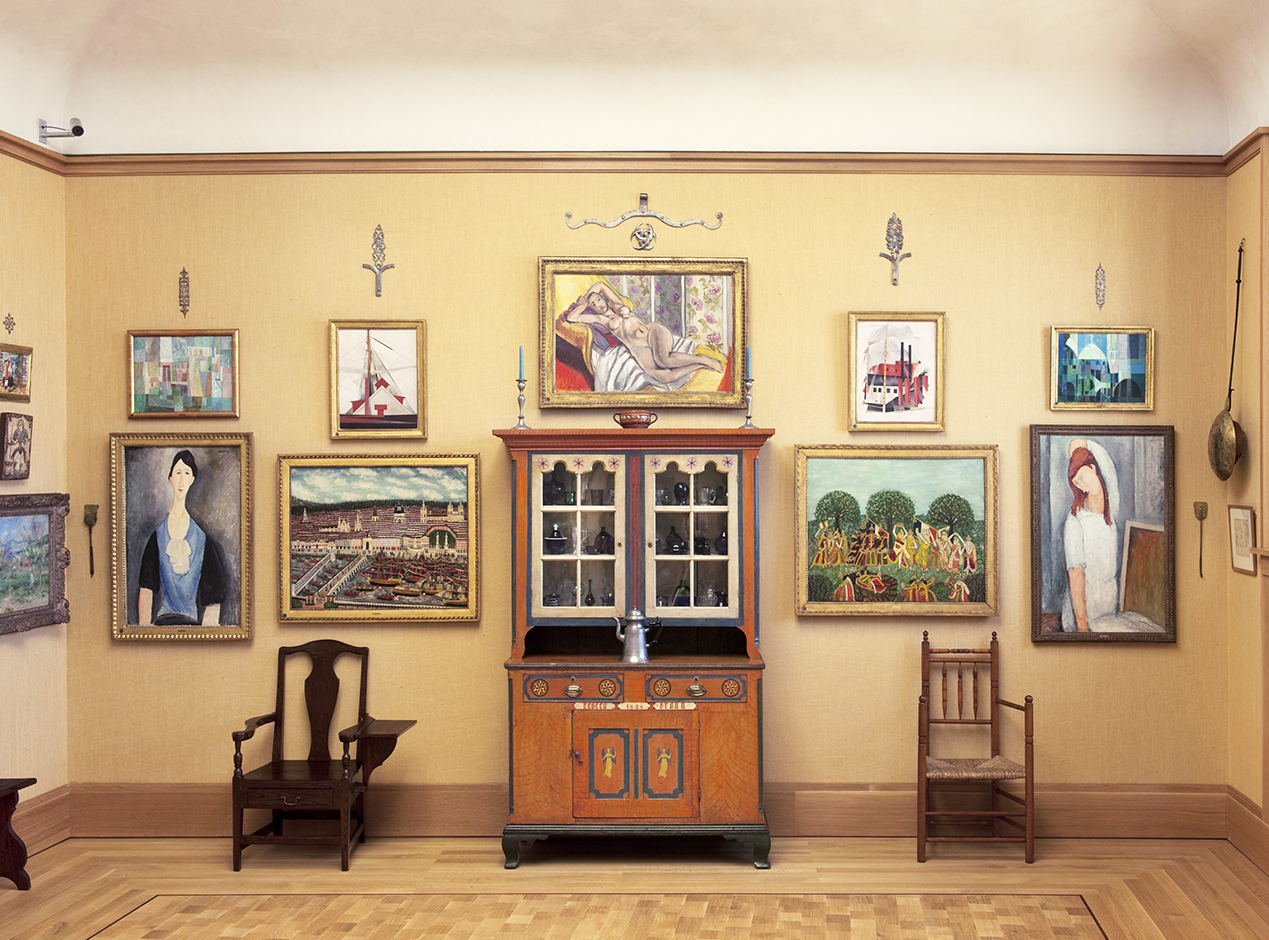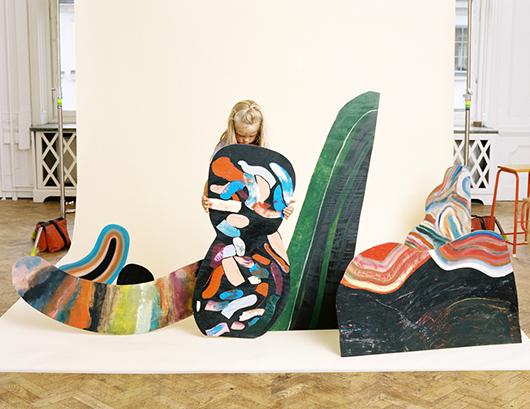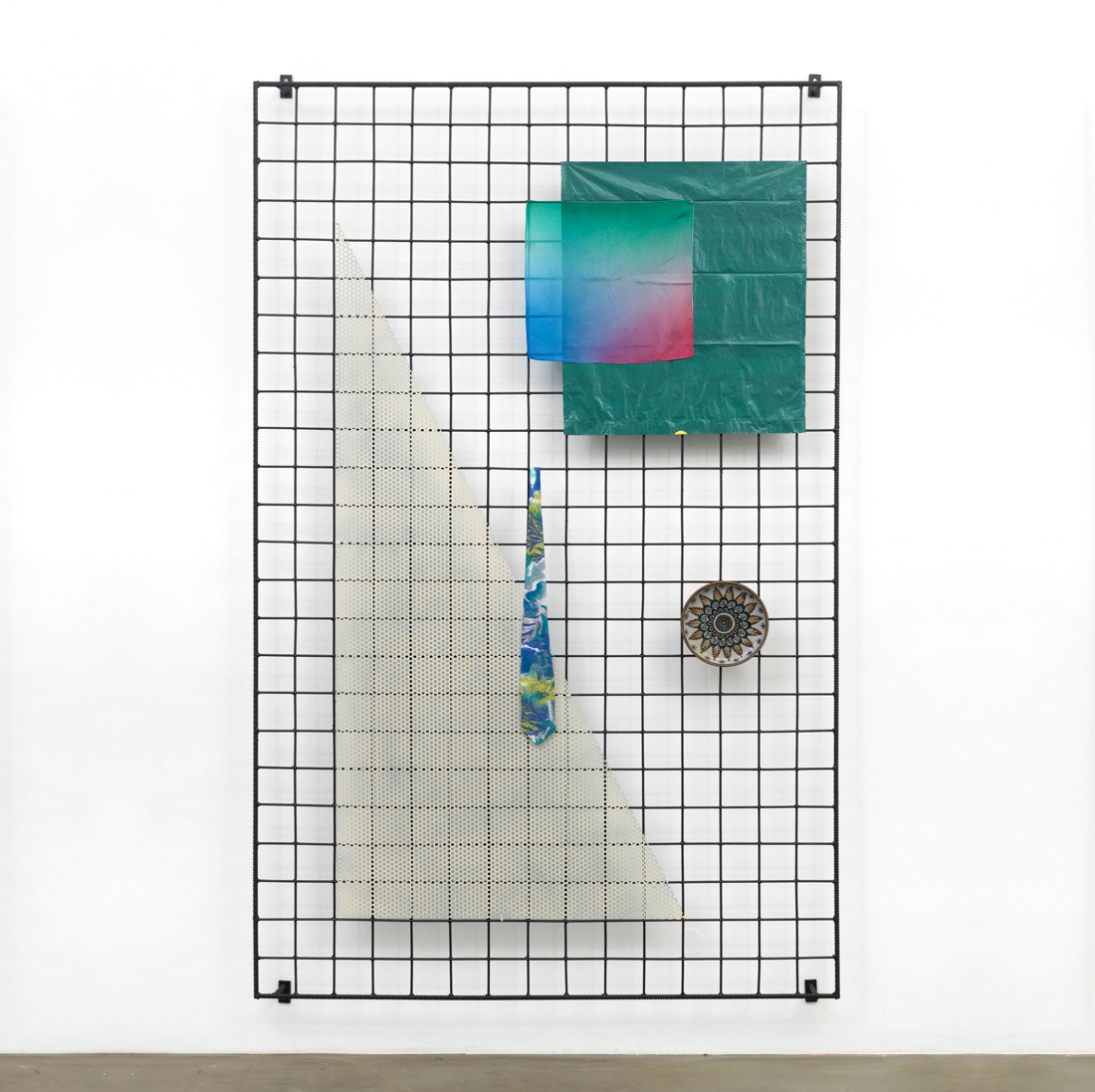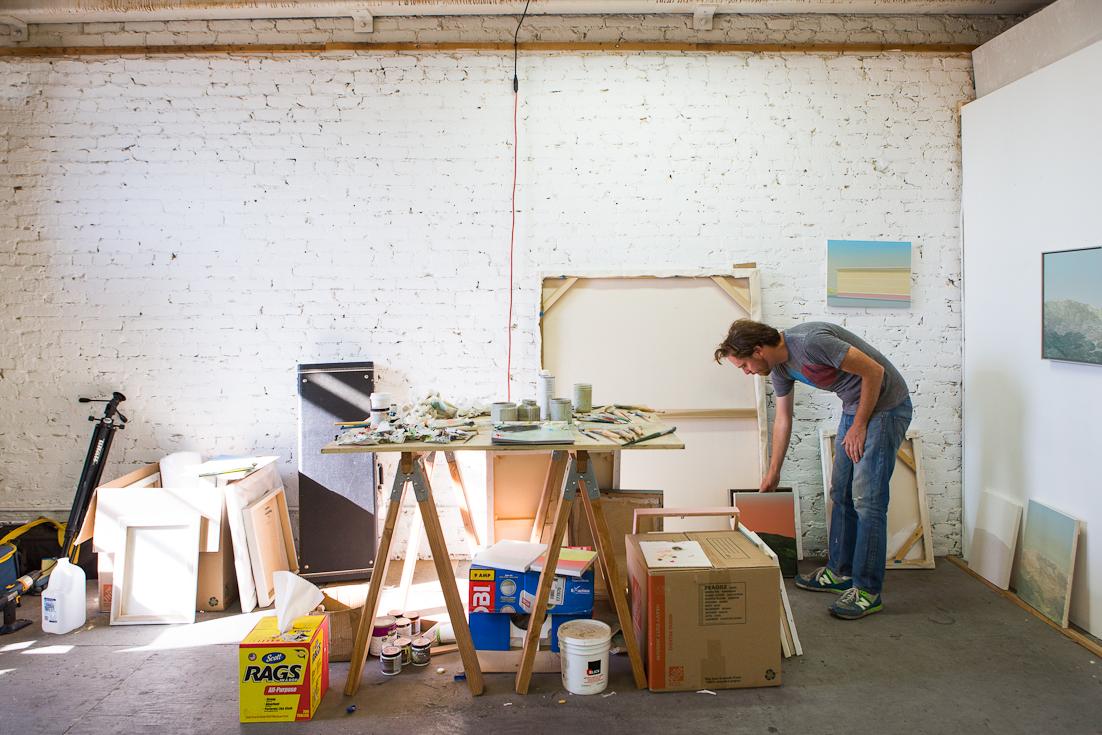
11.08.13
Studio Visit
Jake Longstreth, Artist
If you’re familiar with the work of Jake Longstreth (which we weren’t until it was brought to our attention by our newest contributor, Laure Joliet!) you probably know him from a series of paintings that made the blog rounds a few years back. Hyper-realistic depictions of empty suburban landscapes and architecture — think tennis courts, drive-thru pharmacies, and red-roofed Pizza Huts — the paintings were unsettling, both in their flat anonymity and in their technique, which rendered them eerily photographic.
But a few years ago, Longstreth’s focus shifted. If his old paintings felt as if they owed a debt to Edward Hopper, his new ones have a less certain grip on Americana; in fact, there are tinges of Japanese and French art, both in their subject — hillside after anonymous hillside — and in their technique, which employs a much more obvious brushstroke.
But even if they are less about America, they are still about our “current moment,” as the notes from his new solo show — up at the Monya Rowe Gallery on New York’s Lower East Side through January 4 — explain: “There is a benign quality to these works — they don’t so much dramatize the conditions of air pollution and climate change as suggested in the exhibition’s title (Particulate Matter) but infer, in their loveliness, the subtle and creeping insidiousness of our current moment. The difficulty in taking the natural world’s appearances at face value is felt.” We recently spoke to Longstreth from his Los Angeles studio to find out more.
PHOTOS BY LAURE JOLIET
The paintings in these pictures are much more abstract than your previous work. What’s changed for you?
“The older work I’d done was a lot of big-box retail — deeply homogenized architecture that you would see anywhere off any exit in the U.S. That’s how I got started with art basically. I was interested in landscape pictures and how they related to our current conditions — our culture, our economy, our history. I went pretty hard with that for a bunch of years and I gradually became more interested in working with those same broad themes of landscape as a reflection of our current lives but somehow making pictures that were a bit more open and ambiguous and not directly centered on a piece of crappy architecture like Home Depot.
So I started doing these mountain paintings, and the palette that was guiding principle of paintings was that of smog — a lot of grays and dusty browns and everything very muted. They’re not based on photos; they’re more improvised realist paintings. The general backdrop is one of climate change — something that is impossible to depict directly. They’re not really about that, but it’s hard to look at even the most remote mountains these days without the knowledge that we live in this crazy technological and extractive era. 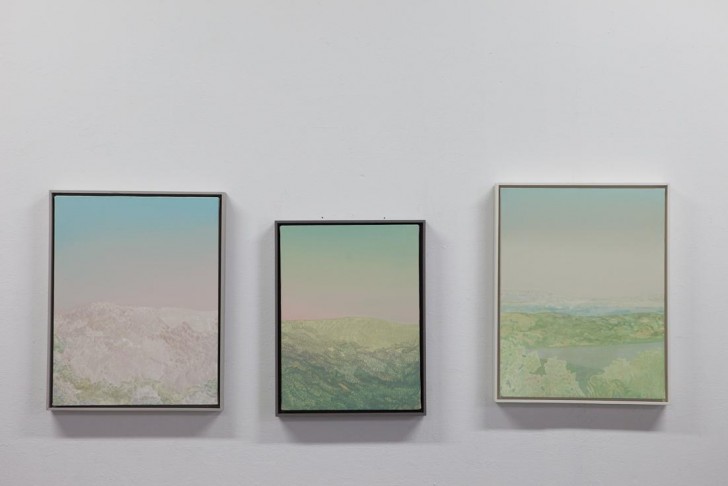
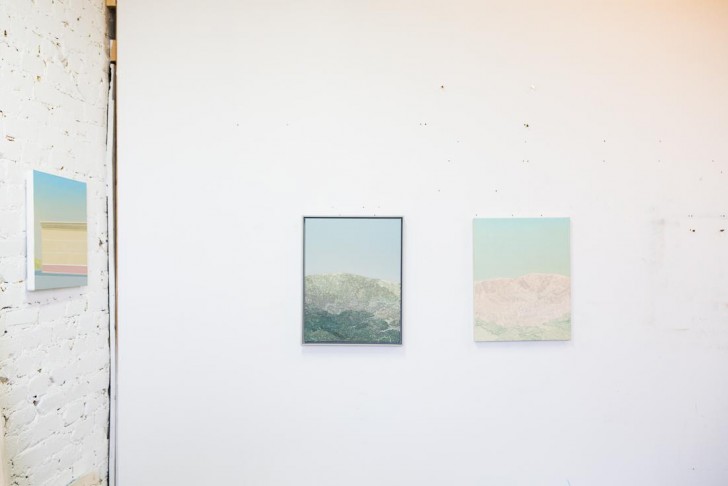
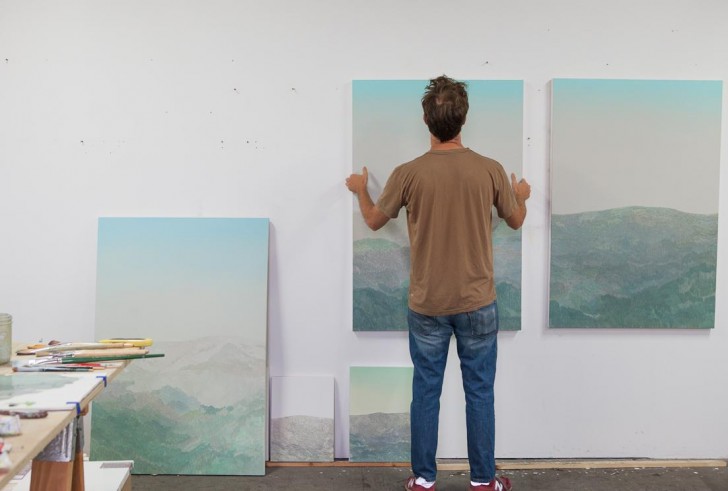
Could it have been your recent move to LA that influenced the new work?
I moved to Los Angeles about a year and a half ago. I was in New York before that, and I did a few early versions of these paintings there, which was maybe my subconscious telling me I needed to move back to the West Coast, where I’d spent my entire adult life. Some days it is really gray and brown and you look at a mountain and it’s in this wall of smog. But it’s not so didactic as that. It’s more about the light here and the intensity of the light here. Even on a brilliantly clear day like today, with a nice stiff breeze coming from ocean, the light is so intense and so blue. There’s a very distinct palette here. The paintings aren’t necessarily of LA but it can’t help but rub off.
What are the roots of your earlier work?
I grew up on the East Coast, in Connecticut. My parents moved there in the 1970s, and the town we lived in was really rural — a quintessentially small New England farm town. As the ’80s and ’90s wore on, the town became deeply suburban. There were still pockets — you’d be driving on a dirt road with an old white congregational church and a red barn straight out of an Edward Hopper painting or something. Then you’d drive a little further and there’d be a Quiznos and a Blockbuster Video. I left when I was 18 and went to college in Oregon. I was always into 2D art stuff, always gravitated towards coloring and drawing. I felt attracted to that world whether that’s graphic design or painting or comic books — whatever.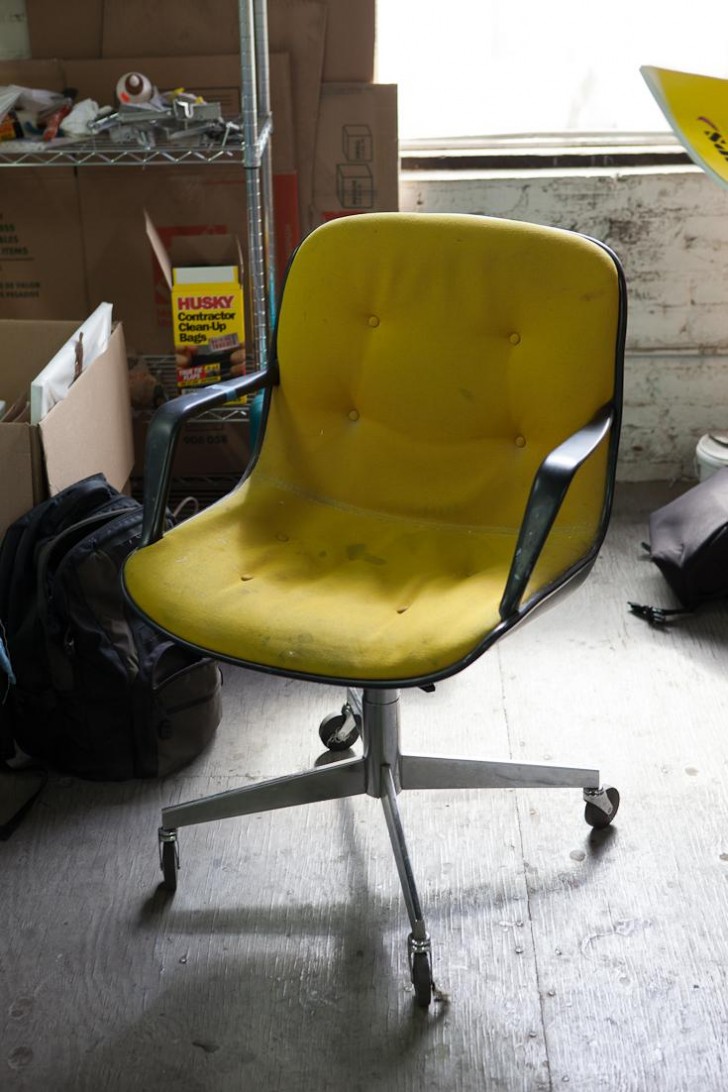
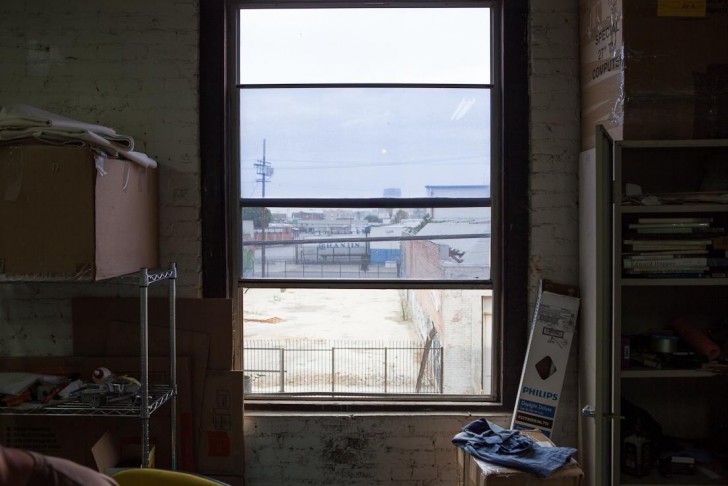
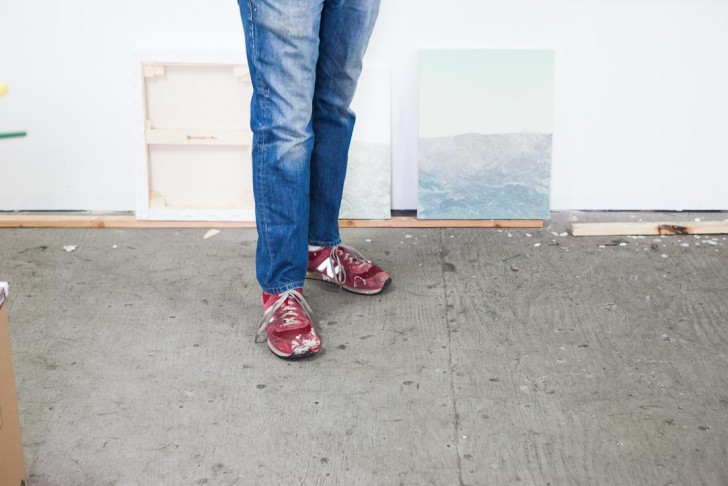
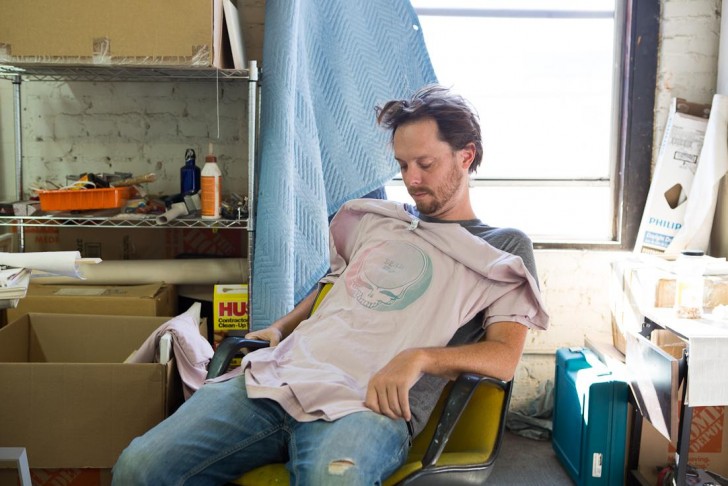
Can you talk about your process a bit?
With the Particulate Matter paintings, they’re sort of improvised tone poems. I usually start with a sense of the palette and from there I go. The paintings end up being pretty realistic, and they need to have a sense of luminosity and depth to them, but the mark-making is unplanned. I get colors going and push paint around until the right shapes and relationships crystallize. And then I put paint in the sky last. I make a lot of painting and then edit down. The older architecture work, those were meticulously planned and took a while to execute which seems looking back like a pretty sensible thing to do if you’re painting architecture. Now that I’m painting pictures of mountains, they’re a little bit more off the cuff and random, which seems a satisfying and logical approach to that subject. 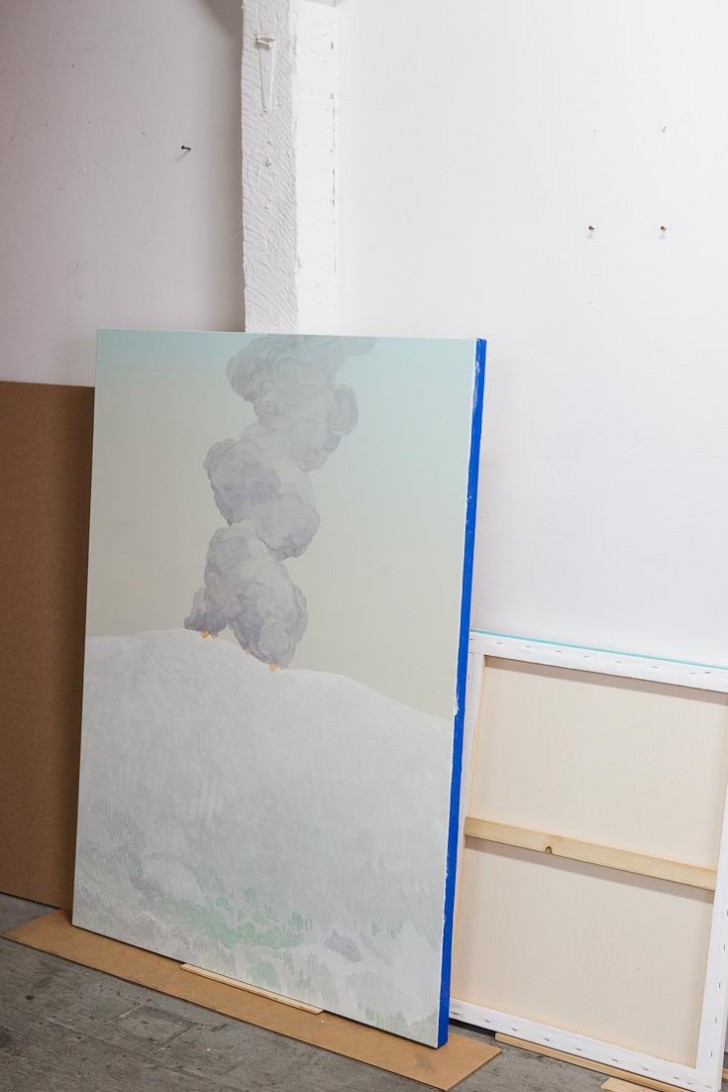
There are a few paintings in the series that almost look like a volcano — there’s a gray cloud of ash erupting from something. Are those different in some way from the mountain paintings?
Those actually aren’t going in the show; it was part of something else I was working on. You know when you’re working quickly, you do a lot and a lot of paintings get thrown away. You know what you want to do but sometimes it ends up being different from what you think. There’s this great Gerhard Richter quote. He spent a long time in the early ’70s just doing gray monochrome abstract painting. And he said he would paint like eight canvases in one day but somehow one of them was better than the other. Which is kind of deep — but is true and applies. 